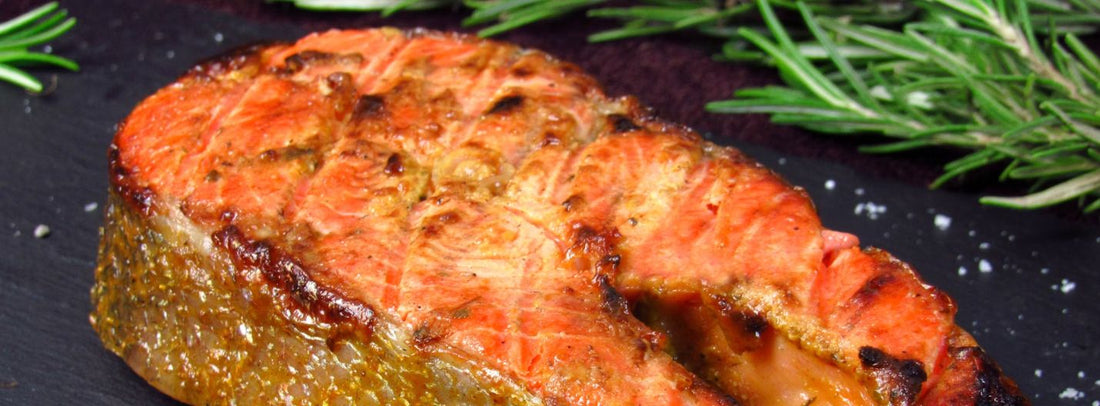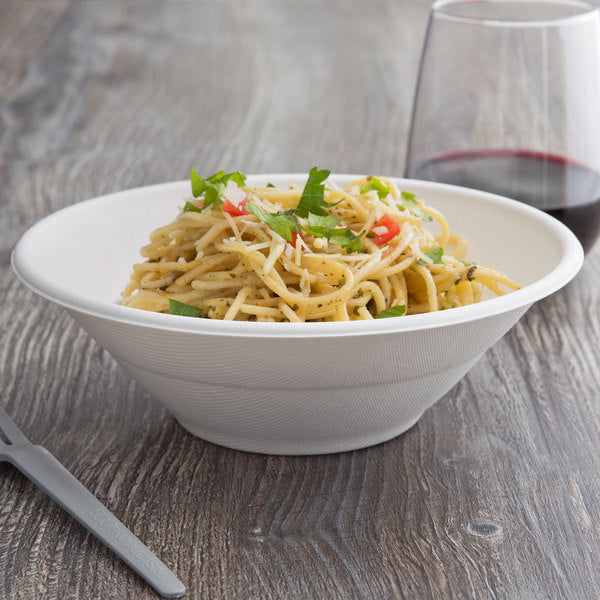Frying fish is a simple yet essential culinary technique. The right oil and temperature can make a big difference in the taste and texture of your dish. This guide will help you master the art of frying fish, finding the best oil to fry fish so you can create delicious and crispy results every time.
- What is the Best Oil for Frying Chicken Wings & Breast?
- Beyond the Salad: Culinary Uses of Salad Oil
- Olive Oil vs Extra Virgin Olive Oil: Which is Better For Cooking?
Types of Oils for Frying Fish
Before going to find the best oil to fry fish, in this section, delve into common types of oils for chefs to use.
High-Heat Oils
- Avocado Oil: Renowned for its high smoke point and neutral flavor, avocado oil is an excellent choice for frying fish. Its rich content of monounsaturated fats contributes to a healthier cooking experience.
- Peanut Oil: With an exceptionally high smoke point and a subtle nutty flavor, peanut oil is a popular option for frying. It is rich in monounsaturated fats, making it a healthier alternative to some other oils.
- Canola Oil: Offering a high smoke point and a mild flavor, canola oil is a versatile choice for frying fish. Its low saturated fat content makes it a healthier option.
- Grapeseed Oil: Known for its high smoke point and neutral flavor, grapeseed oil is a good choice for frying. It is rich in antioxidants, providing additional health benefits.
- Sunflower Oil: With a high smoke point and a mild flavor, sunflower oil is a suitable option for frying. It is high in polyunsaturated fats, which are beneficial for heart health.
- Corn Oil: Offering a high smoke point and a neutral flavor, corn oil is a versatile choice for frying. It is rich in polyunsaturated fats, making it a healthier option.

Medium-Heat Oils
- Olive Oil (Extra Virgin): While olive oil is primarily used for its flavor, it can also be used for frying, especially for delicate fish. Its medium smoke point and fruity flavor can add depth to the finished dish.
- Vegetable Oil: A blend of various oils, vegetable oil offers a medium smoke point and a neutral flavor. It is a versatile choice for frying, but its specific composition may vary.
Low-Heat Oils
- Butter: Although butter has a low smoke point, it can be used for shallow-frying delicate fish. Its creamy flavor can add richness to the dish.
- Ghee: A clarified butter, ghee has a higher smoke point than traditional butter, making it a more suitable option for frying. Its nutty flavor can add complexity to the finished dish.

Comparison of Oils
For deep understand the common types of oil for frying, below is a comparative table of them:
|
Oil |
Smoke Point |
Flavor |
Health Benefits |
|
Avocado Oil |
High |
Neutral |
Rich in monounsaturated fats |
|
Peanut Oil |
Very High |
Slightly nutty |
High in monounsaturated fats |
|
Canola Oil |
High |
Mild |
Low in saturated fats |
|
Grapeseed Oil |
High |
Neutral |
Rich in antioxidants |
|
Sunflower Oil |
High |
Mild |
High in polyunsaturated fats |
|
Corn Oil |
High |
Neutral |
High in polyunsaturated fats |
|
Olive Oil (Extra Virgin) |
Medium |
Fruity |
Rich in monounsaturated fats |
|
Vegetable Oil |
Medium |
Neutral |
Blend of various oils |
|
Butter |
Low |
Creamy |
High in saturated fats |
|
Ghee |
Higher than butter |
Nutty |
Clarified butter |
Overall, each oil has their owns characteristics. So what factors make them the best oils for frying fish? In the next section, we will explore factors to consider when choosing oil to deciding the right oil for your restaurant.
Best Oils to Fry Fish for Specific Types of Fish
Before selecting the perfect oil for frying fish, consider these key factors:
- Smoke Point: Choose an oil with a high smoke point to prevent harmful compounds and unpleasant flavors.
- Flavor: Select an oil whose flavor complements the fish.
- Health Benefits: Consider the nutritional value of the oil, especially if health is a concern.
- Cost: Balance cost with the oil's suitability for frying and desired flavor and health benefits.
Relying on theses factors, here are our suggestion for the best oil to fry fish.
Delicate Fish (e.g., Salmon, Cod)
- Extra Virgin Olive Oil: The subtle fruity flavor of extra virgin olive oil can complement the delicate taste of salmon and cod, creating a harmonious balance of flavors. Its high smoke point ensures even cooking and a crispy exterior without overpowering the fish's natural taste.
- Canola Oil: With its neutral flavor and high smoke point, canola oil is a versatile choice for frying delicate fish. It provides a crispy exterior without compromising the fish's tender texture.
- Grapeseed Oil: The high smoke point and neutral flavor of grapeseed oil make it suitable for frying delicate fish, ensuring a crispy exterior and a tender interior. Its rich antioxidant content provides additional health benefits.

Hearty Fish (e.g., Tuna, Swordfish)
- Avocado Oil: The high smoke point and neutral flavor of avocado oil can handle the heartier texture of tuna and swordfish, providing a crispy exterior without compromising the fish's natural flavor. Its rich content of monounsaturated fats contributes to a healthier cooking experience.
- Peanut Oil: The nutty flavor of peanut oil can complement the rich taste of tuna and swordfish, creating a delightful combination of flavors. Its high smoke point ensures even cooking and a crispy exterior.
- Sunflower Oil: With its high smoke point and mild flavor, sunflower oil is a good choice for frying hearty fish, ensuring a crispy exterior and a tender interior. Its high content of polyunsaturated fats provides additional health benefits.
Fried Fish Fillets
- Vegetable Oil: A versatile choice for frying fish fillets, vegetable oil offers a neutral flavor and a high smoke point, ensuring even cooking and a crispy exterior. Its affordability and wide availability make it a popular choice for home cooks.
- Canola Oil: The mild flavor and high smoke point of canola oil make it suitable for frying fish fillets, providing a crispy exterior without overpowering the fish's natural taste. Its low saturated fat content makes it a healthier option compared to some other oils.

Deep-Fried Fish (e.g., Tempura)
- Peanut Oil: The high smoke point and neutral flavor of peanut oil make it ideal for deep-frying fish, such as tempura, ensuring a crispy exterior and a light, airy texture. Its high smoke point prevents the oil from breaking down and imparting an unpleasant flavor to the fish.
- Vegetable Oil: A versatile choice for deep-frying fish, vegetable oil offers a neutral flavor and a high smoke point, providing a crispy exterior and a light, airy texture. Its affordability and wide availability make it a popular choice for home cooks.
Tips for Frying Fish
Proper technique and attention to detail will result in a delicious and crispy dish. To ensure perfect fried fish, follow these essential tips below.
Heating the Oil to the Correct Temperature
- Use a thermometer: For precise temperature control, use a deep-fry thermometer or a candy thermometer.
- Test the oil: Drop a small piece of bread into the oil. If it sizzles and floats to the surface immediately, the oil is ready.
Dredging the Fish in a Coating
- Choose a coating: The coating you use can add flavor and texture to your fried fish. Popular options include flour, breadcrumbs, and cornmeal.
- Ensure even coverage: Coat the fish thoroughly in the chosen coating to create a crispy crust.
Avoiding Overcrowding the Pan
- Limit the number of fish: Overcrowding the pan can lower the oil temperature, resulting in soggy fish.
- Cook in batches: If necessary, cook the fish in batches to maintain a consistent oil temperature.
Properly Draining the Fried Fish
- Use a paper towel-lined plate: Place the fried fish on a paper towel-lined plate to absorb excess oil.
- Serve immediately: Enjoy the fried fish while it's hot and crispy.
Conclusion
Frying fish is a simple yet essential culinary technique that can be mastered with a little practice. By understanding the different types of oils, factors to consider when choosing oil, and proper frying techniques, you can find the best oil to fry fish and create delicious and crispy fried fish dishes that will impress your customers.







